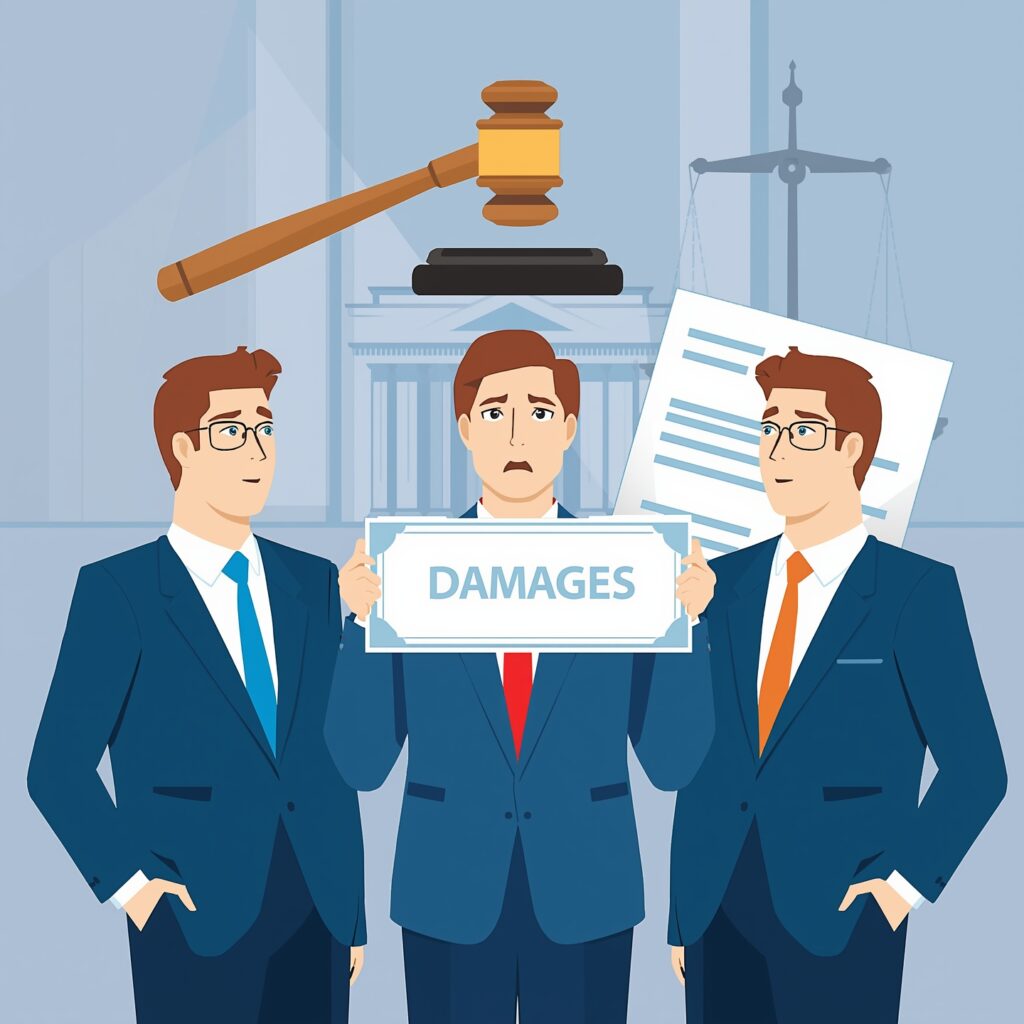Joint and Several Liability Explained:
Joint and several liability is a crucial legal concept that can have significant consequences in lawsuits involving multiple parties. Whether you’re a business owner, contractor, partner, or someone involved in a civil case, understanding joint and several liability can help you make informed decisions and avoid unexpected legal outcomes.
We’ll explore what joint and several liability means, how it works in practice, where it applies, and the risks and benefits associated with it.
What Is Joint and Several Liability?
Joint and several liability is a legal doctrine used when two or more parties are held responsible for the same legal obligation—most commonly, a financial debt or damages from a lawsuit.
Under joint and several liability:
- Each party is individually responsible for the entire obligation.
- A plaintiff can collect the full amount of damages from any one of the parties, regardless of their share of fault.
- The party who pays more than their fair share can later seek contribution from the others.
This principle is commonly used in tort law, contract law, and debt-related cases.
How Joint and Several Liability Works: An Example
Let’s say three people—Alice, Bob, and Charlie—are found liable for causing $90,000 in damages due to a faulty construction project. The court determines:
- Alice is 50% at fault
- Bob is 30% at fault
- Charlie is 20% at fault
Despite these percentages, under joint and several liability, the plaintiff can choose to collect the entire $90,000 from any one of them—say, Charlie, even though he’s only 20% responsible. Charlie would then have the right to recover the remaining 80% from Alice and Bob.
This protects the plaintiff by ensuring they receive full compensation, especially if one or more defendants can’t pay.
Key Elements of Joint and Several Liability
To better understand the implications, here are the main features of joint and several liability:
1. Shared Responsibility
All defendants share responsibility for the entire amount of damages, even if their individual contributions to the harm were unequal.
2. Plaintiff Advantage
Plaintiffs benefit from this rule because they are more likely to receive the full compensation by pursuing the most solvent or available defendant.
3. Right to Contribution
The party who ends up paying more than their share can sue the others to recover their proportionate amounts.
4. Used in Personal Injury and Business Lawsuits
It’s most common in cases like medical malpractice, business partnership disputes, construction liability, and other negligence claims.
Pros and Cons of Joint and Several Liability
✅ Pros
- Ensures full compensation for victims, even if one party is bankrupt or unavailable.
- Encourages co-defendants to take responsibility and monitor one another’s actions.
- Provides legal recourse for defendants to recover from others who share the fault.
❌ Cons
- One defendant may end up paying far more than their fair share.
- Encourages “deep pockets” litigation, where plaintiffs target wealthier defendants.
- Can lead to complex litigation between defendants post-judgment for contribution.
Joint and Several Liability vs. Several Liability
It’s important to distinguish between joint and several liability and several liability:
| Feature | Joint and Several Liability | Several Liability |
|---|---|---|
| Who pays? | Any one or more defendants can be held responsible for the entire amount. | Each defendant pays only their share. |
| Plaintiff rights | Can pursue full amount from one party. | Must pursue each party individually. |
| Defendant recovery | Can seek reimbursement from co-defendants. | No need, since each pays only their part. |
Some jurisdictions now favor several liability to limit the burden on defendants who are less at fault.
Where Is Joint and Several Liability Applied?
The application of joint and several liability depends on the jurisdiction and the type of case. For example:
- In the United States, many states apply modified versions of joint and several liability.
- In the United Kingdom, it’s used in contract and tort law.
- Some countries have moved toward proportionate liability to promote fairness among defendants.
Always check local laws or consult a lawyer to understand how it applies in your specific case.
How to Protect Yourself
If you’re entering a partnership, signing a joint contract, or engaging in activities that involve shared responsibility, here are ways to protect yourself:
- Clearly define responsibilities in contracts.
- Include indemnity clauses to protect against others’ negligence.
- Obtain liability insurance to cover potential claims.
- Understand your legal risks before joining partnerships or group ventures.
Legal advice is essential when dealing with joint and several liability in high-risk situations.
Final Thoughts
Joint and several liability is a powerful legal concept that ensures victims get fully compensated, but it can place a heavy burden on co-defendants. By understanding how it works, its implications, and how to protect yourself, you can navigate shared liability situations with confidence.
Whether you’re a plaintiff, a defendant, or someone involved in business contracts, being aware of joint and several liability can make a significant difference in your legal strategy and financial protection.
FAQs About Joint and Several Liability
❓ Is joint and several liability fair?
It depends. It ensures justice for plaintiffs but can unfairly penalize less-responsible defendants.
❓ Can joint and several liability be waived?
Yes, it can be waived or limited through clear contract terms or governed by local law.
❓ What happens if one defendant is bankrupt?
The remaining defendants may have to pay more than their share, even up to the full amount.

